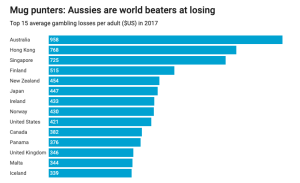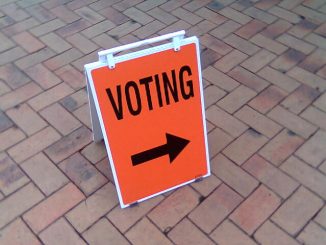
Gambling is a significant public policy issue in Australia, which impacts the health and well-being of individuals and families in various ways. According to estimates, legal forms of gambling resulted in a loss of around $25 billion to Australians in 2018-19, making it the world’s highest per capita losses.

The social costs of gambling, including adverse financial, emotional, and psychological impacts, relationship and family effects, and productivity loss and work impacts, have been estimated at around $7 billion in Victoria alone. These harms affect not only the individuals directly involved but also their families, peers, and the wider community.
The research by the Australian Institute of Family Studies found that 38% of the adult population gambled at least weekly. Three in four Australians gambled at least once during the past 12 months and, of those, almost half (46%) were classified as being at some risk of harm from wagering.
A survey of 1,765 people found that “seeing or hearing wagering advertising was reported to influence betting behaviour in risky ways, especially among young people and those at risk of gambling harm”.
When people were exposed to wagering advertising, 21% were prompted to start betting for the first time, 28% tried a new form of betting, 29% said they “placed bets on impulse” and a third of people increased their betting.
Young people were more likely to bet on impulse or increase their betting after seeing gambling ads.
According to a research conducted by the Australian Gambling Research Centre, the majority of adult Australians (64%) believe that it should be the responsibility of governments to determine the regulations surrounding the advertising of sports and race betting in the country.

Interviewees:
- Tom Wichitakul 0474248359
- Nancy Greer – Senior Research Officer of Australian Gambling Research Centre, who has over 15 years’ experience as a researcher in the fields of gambling
Publication and target user group
The Sydney Morning Herald – a daily newspaper published in Sydney with a focus on news, politics, and current events.
The Herald has a strong reach among professionals and decision-makers, making it a suitable platform to discuss issues relevant to these audiences. Given the prevalence of gambling in New South Wales, its readership is likely to be interested in the topic of gambling regulation.
Online delivery
-
- Interactivity:
Using poll to increase interactivity and engage the audience in the story. Polls can be used to add depth to a news story by providing additional context and nuance to the topic being discussed.
-
- Hypertext:
Gambling in Australia:
https://www.aihw.gov.au/reports/australias-welfare/gambling
Community attitudes towards sports and race betting advertising in Australia:
Gambling participation and experience of harm in Australia:
https://aifs.gov.au/research/research-snapshots/gambling-participation-and-experience-harm-australia
Exposure and impact of sports and race betting advertising in Australia
Related news:
Majority of Australians support banning gambling advertising on TV, study finds
Cut-off time: Support for banning gambling ads before 10.30pm
-
- Multimedia:
Audio: Support for ban on gambling ads
This section will consist of an excerpt from the interview recording.
Video: Two thirds of Australians believe gambling ads are ‘too common’




The background paragraph is well-written and detailed. However, the featured image is not very clear. The “sportsbet” part is blurry and the watermark on the image is distracting. It could be improved by finding a different image that illustrates sports betting as an issue in Australia, without a watermark.
You have demonstrated good use of hyperlinks to secondary sources and a good range of online delivery methods. However, it would be better if you included more information about the newsworthiness and story angle of this piece. Consider explaining the timeliness and impact of the topic to better engage readers.
Furthermore, the contact details of the interviewees can be improved by including Tom Wichitakul’s position and Nancy Greer’s contact details.